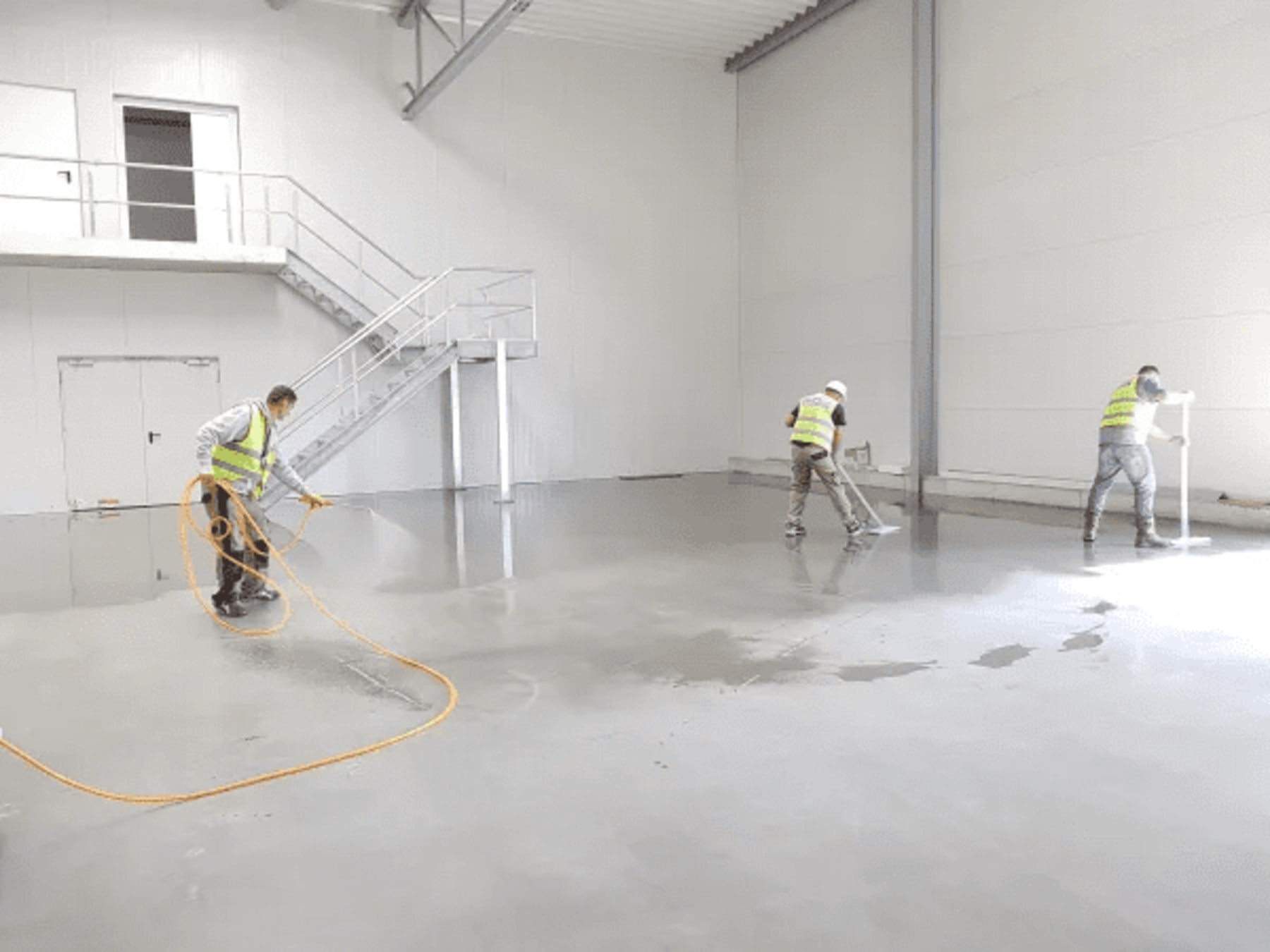Services
Commercial Concrete Flooring
- Concrete Polishing
- Epoxy Floors
- Decorative Cement coatings
- Urethane Cements
- Staining and Dying
- Burnished Concrete
- Sealed Concrete
- Resinous Seamless Flooring
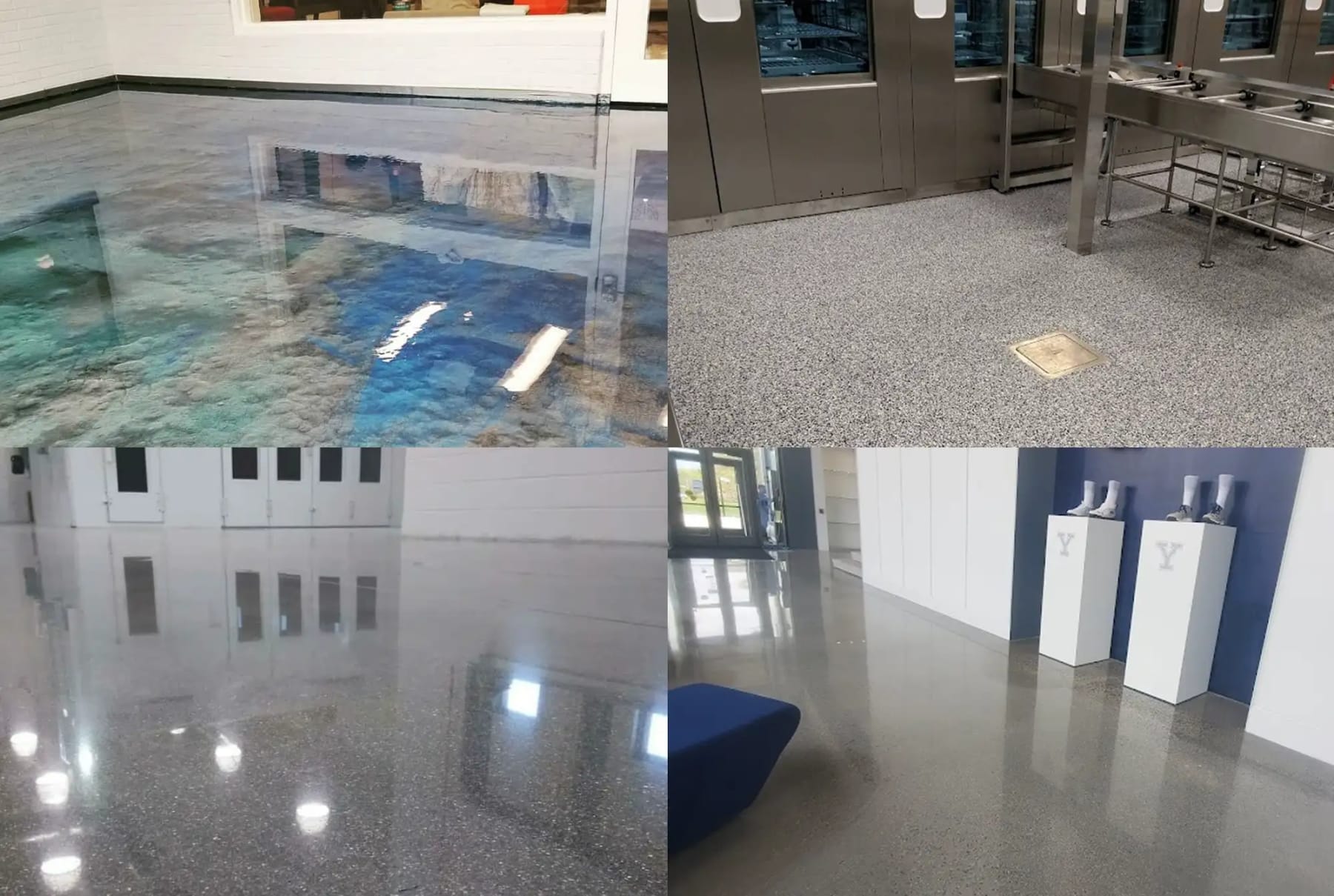
Overlay and Polish
Concrete overlay and polish is a transformative process for existing concrete surfaces. First, a thin layer of specialized concrete overlay is applied to the existing surface, providing a fresh canvas for improvement. This overlay can be customized with colors, textures, and patterns to achieve the desired aesthetic. Once the overlay is in place, skilled craftsmen meticulously polish the surface, gradually refining it to a smooth and glossy finish. This polishing process enhances the durability, aesthetics, and longevity of the concrete, creating a stunning and resilient surface that elevates any space. Concrete overlay and polish offers a versatile solution for revitalizing both commercial and residential concrete surfaces with a more controlled and refined finish over polishing existing slabs. Concrete overlayments give designers and architects as well as end users the ability to design truly one of a kind floors by adding glass, stone aggregates, shells and more for a truly unique long lasting durable finish.
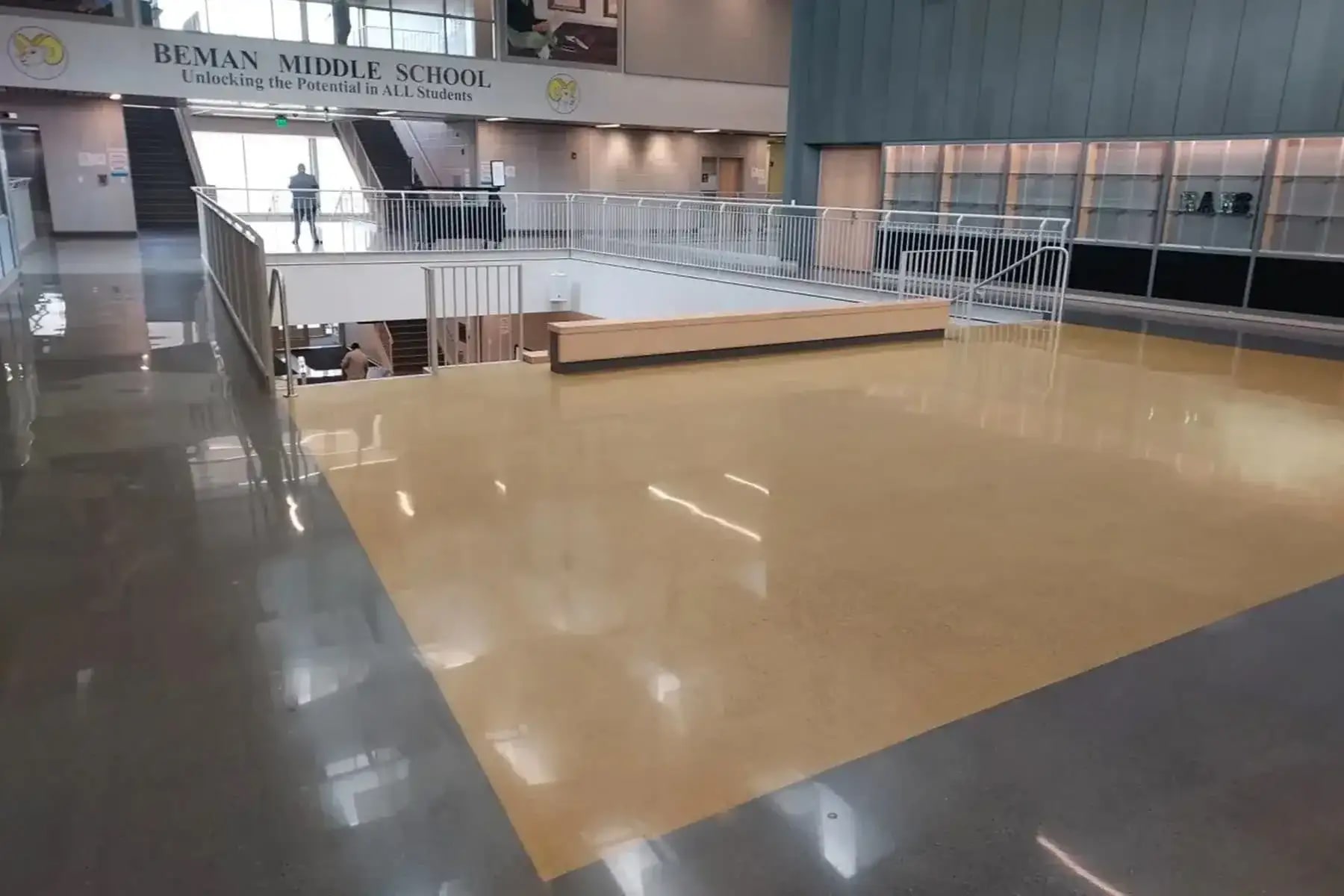
Polished Concrete
Polished concrete offers several benefits:
- Durability: Polished concrete floors are extremely durable and long-lasting, able to withstand heavy foot traffic, machinery, and even vehicular traffic.
- Low Maintenance: They require minimal maintenance compared to other flooring options. Regular cleaning and occasional resealing are usually sufficient to keep them looking pristine.
- Sustainability: Polished concrete utilizes the existing concrete slab, reducing the need for additional materials. It also doesn't require hazardous chemicals for maintenance, making it an environmentally friendly option.
- Cost-Effectiveness: Polishing an existing concrete slab can be more cost-effective than installing other flooring materials like hardwood, tile, or carpet. It also reduces the need for ongoing maintenance and replacement.
- Versatility: Polished concrete can be customized in various ways, including adding dyes or stains, creating decorative patterns, or incorporating aggregates for a unique look. This versatility makes it suitable for various environments, from industrial settings to residential spaces.
- Improved Lighting: The reflective surface of polished concrete can enhance natural and artificial lighting in a space, reducing the need for additional lighting fixtures and improving energy efficiency.
- Health Benefits: Polished concrete doesn't harbor allergens like dust mites or mold, making it a healthier flooring option, especially for individuals with allergies or respiratory issues.
Overall, polished concrete offers a combination of durability, low maintenance, sustainability, and aesthetic appeal, making it a popular choice for a wide range of applications.
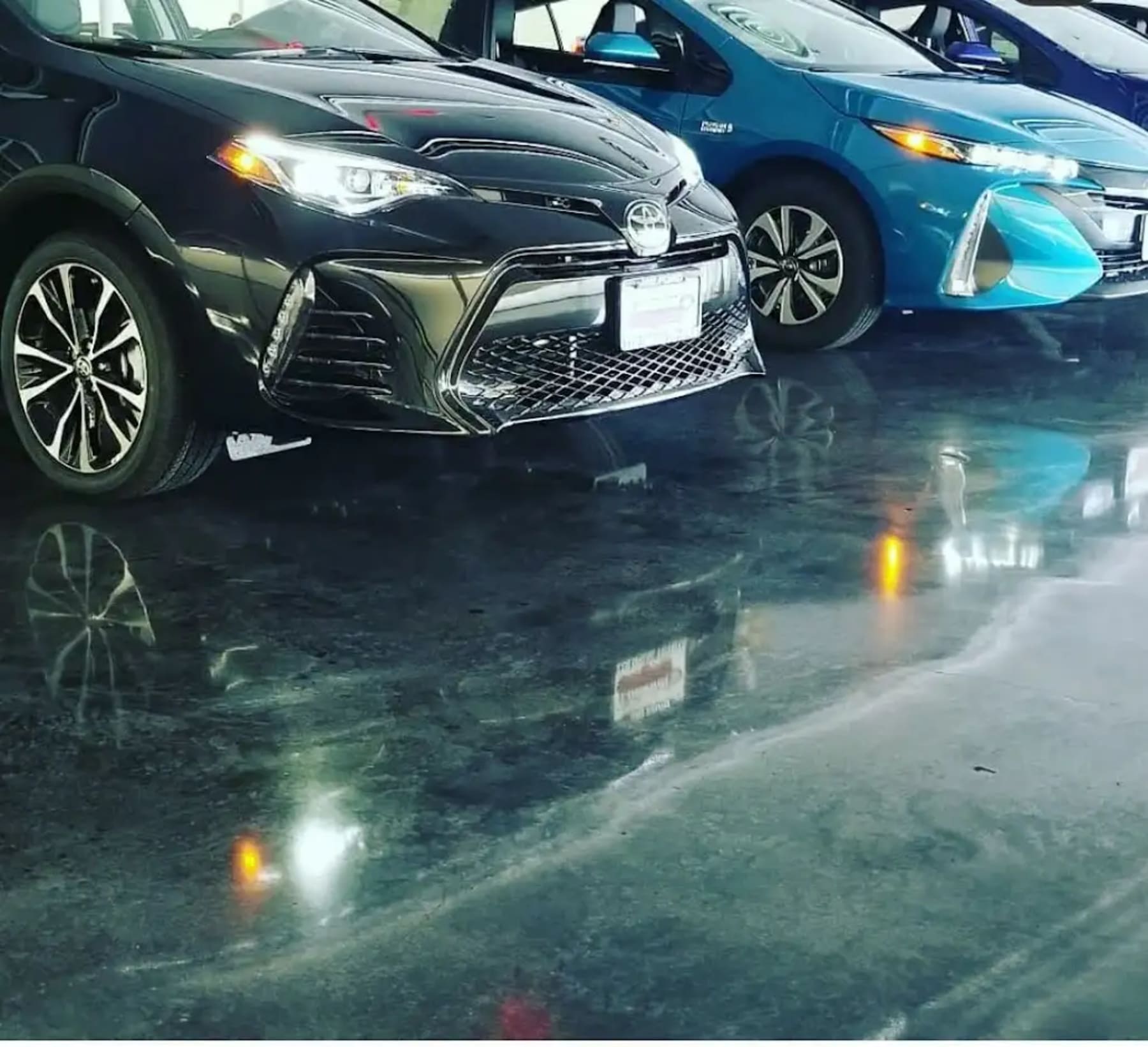
Concrete Coatings and Epoxy Floors
Epoxy floors offer several benefits:
1. Durability: Epoxy coatings create a strong, durable surface that can withstand
heavy traffic, impacts, and chemical spills. They are highly resistant to scratches,
stains, and abrasions.
2. Easy Maintenance: Epoxy floors are seamless and smooth, making them easy
to clean and maintain. They resist dirt, dust, and bacteria, making them ideal for
environments where cleanliness is essential, such as commercial kitchens or
healthcare facilities.
3. Chemical Resistance: Epoxy coatings are resistant to a wide range of
chemicals, including acids, oils, and solvents. This makes them suitable for use
in industrial settings, garages, and laboratories where exposure to chemicals is
common.
4. Versatility: Epoxy coatings can be customized with various colors, patterns, and
textures to suit the design preferences of the space. They can also be combined
with decorative elements like flakes or metallic pigments for a unique aesthetic.
5. Safety: Epoxy floors can be formulated with additives to improve slip resistance,
making them safer for use in areas prone to spills or moisture.
6. Longevity: When properly installed and maintained, epoxy floors can last for
many years without needing to be replaced. This longevity makes them a cost-
effective flooring option over time.
7. Moisture Resistance: Epoxy coatings create a moisture barrier, preventing
water and other liquids from seeping into the concrete substrate. This makes
them suitable for use in areas with high humidity or moisture levels, such as
basements or bathrooms.
Overall, epoxy floors offer a combination of durability, easy maintenance, chemical
resistance, and design versatility, making them a popular choice for a wide range of
commercial, industrial, and residential applications.
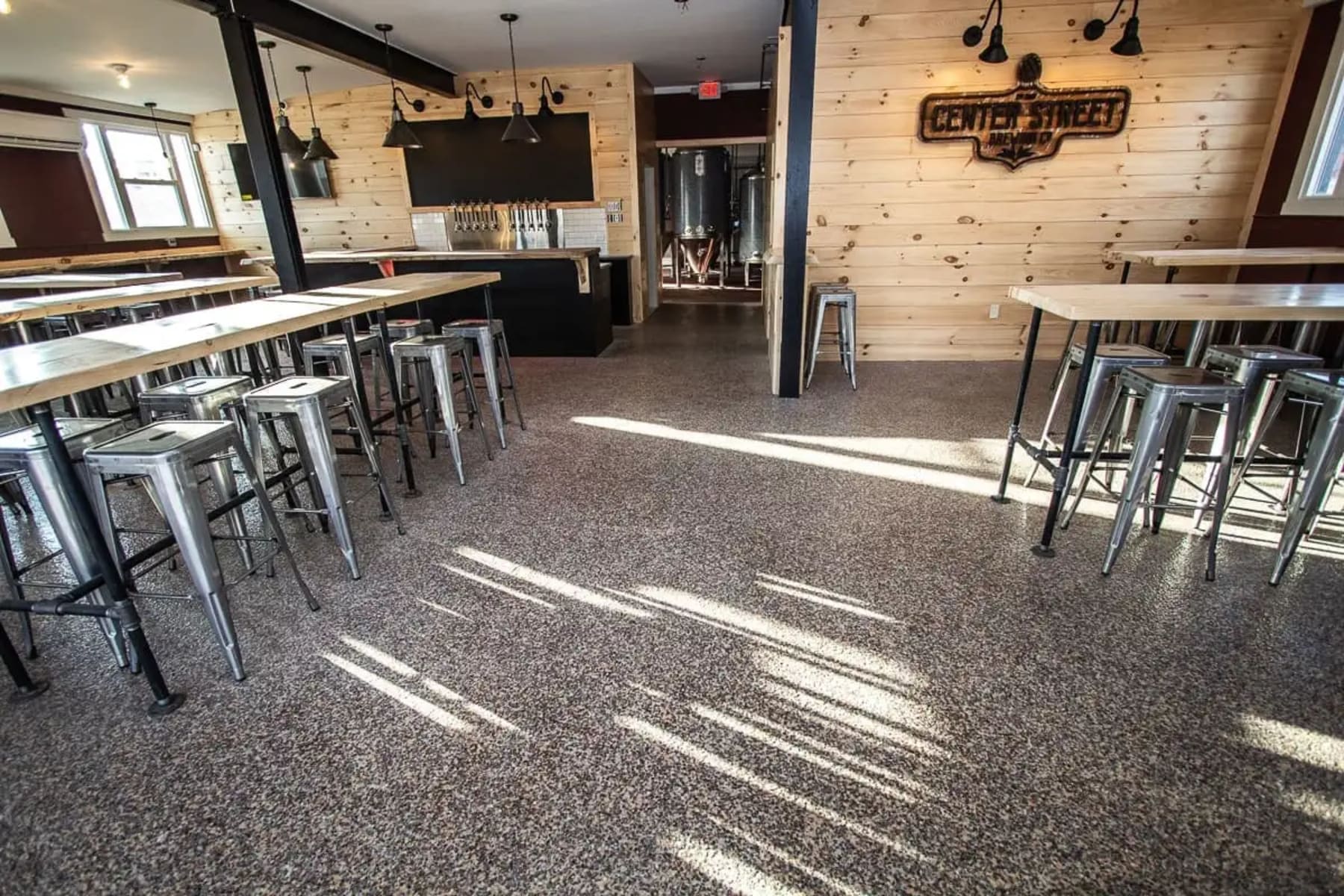
Terrazzo Flooring and Restoration
Terrazzo flooring is a stunning and durable flooring option that has been used for centuries. It consists of a mixture of marble,glass, granite, quartz, or other aggregates combined with a binder material, typically either cement or epoxy resin, to create a smooth and decorative surface. Here's a brief description of terrazzo flooring and the difference between cement and epoxy terrazzo:
Difference between Cement and Epoxy Terrazzo:
- Binder Material:
- Cement Terrazzo: Cement terrazzo uses Portland cement as the binder material. It is a traditional option that offers durability and a classic look.
- Epoxy Terrazzo: Epoxy terrazzo utilizes epoxy resin as the binder material. It provides enhanced flexibility in design, superior strength, and chemical resistance compared to cement terrazzo.
- Installation Process:
- Cement Terrazzo: Cement terrazzo is typically poured in place as a thick slab and then ground and polished once cured.
- Epoxy Terrazzo: Epoxy terrazzo is often installed in thinner layers, sometimes directly over existing concrete or other substrates. It can also be poured in place or precast into tiles for easier installation.
- Appearance and Customization:
- Cement Terrazzo: Cement terrazzo tends to have a more matte finish and a slightly porous surface. It offers a classic, natural stone appearance.
- Epoxy Terrazzo: Epoxy terrazzo provides a glossy finish and a smoother surface. It allows for greater design flexibility, including the incorporation of intricate patterns, logos, or custom graphics.
Both cement and epoxy terrazzo offer exceptional durability, longevity, and aesthetic appeal. The choice between them often depends on factors such as design preferences,
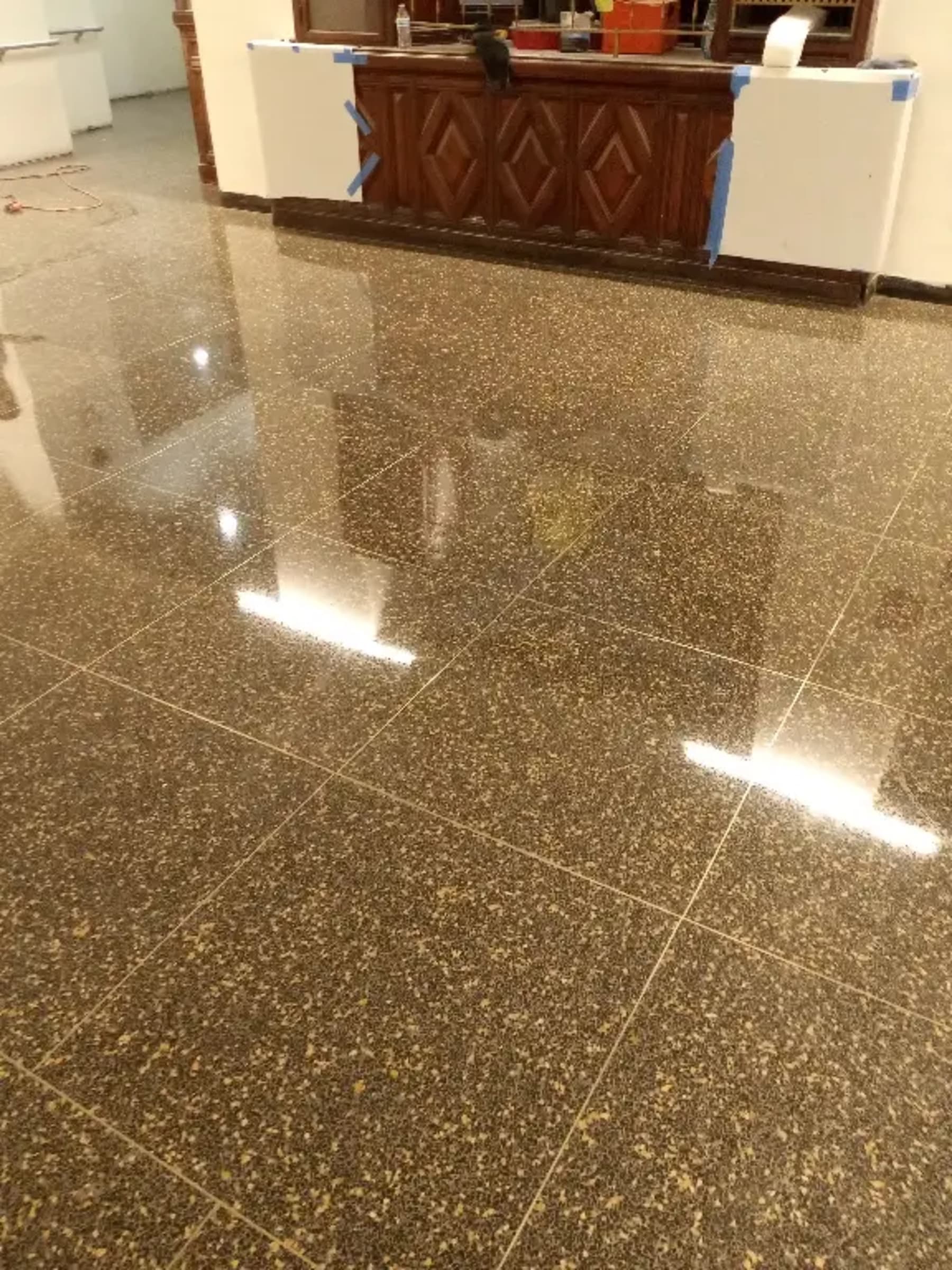
Restoration
Sometimes when concrete is left untreated or neglected it can create a dangerous and unattractive environment. JRS has the expertise to repair and restore any concrete surface or structure to its original or historic beauty and protect it for many more years of use.
- Concrete repair and resurfacing
- Interior, Exterior
- Vertical, Horizontal or Overhead
- Overlayments
- Crack Repair, Cut and Patch
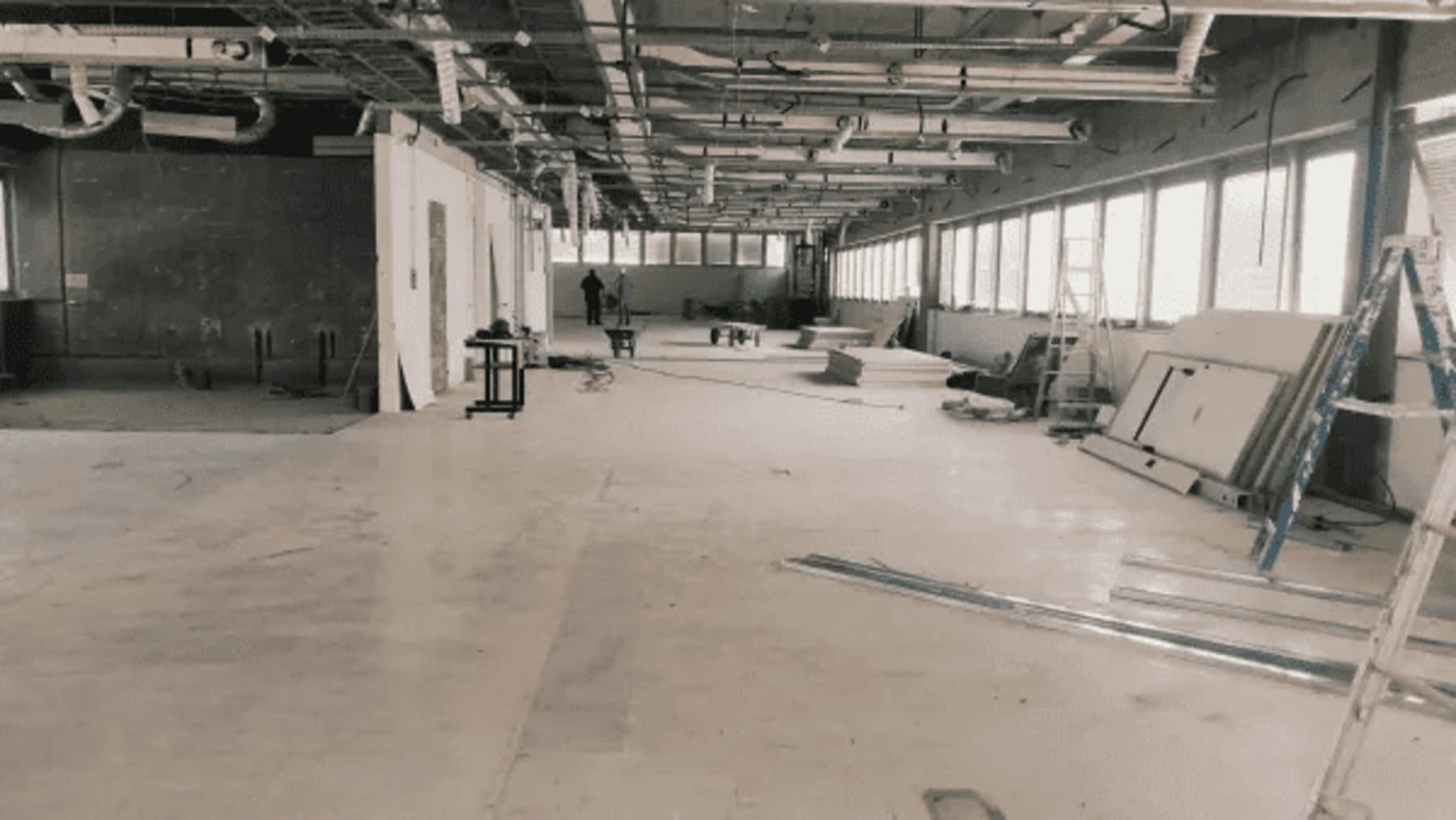
Surface Preparation
- Grinding
- Shot Blasting
- Scarifying
- Carpet, Tile, Glue, and Mastic removal

Cleaning and Maintenance
Just as your equipment, vehicles and machinery need maintenance to perform properly, so does your facility. Not only will facilities need painting from time to time, but flooring also needs to be cleaned and maintained properly. A well maintained facility ensures a clean, healthy and most of all productive work environment. Let the experts at JRS help!
- Commercial, and Industrial hard surface cleaning and Maintenance
- Floor cleaning restoration and maintenance
- Concrete and Masonry cleaning, sealing and maintenance
- Various pressure cleaning
